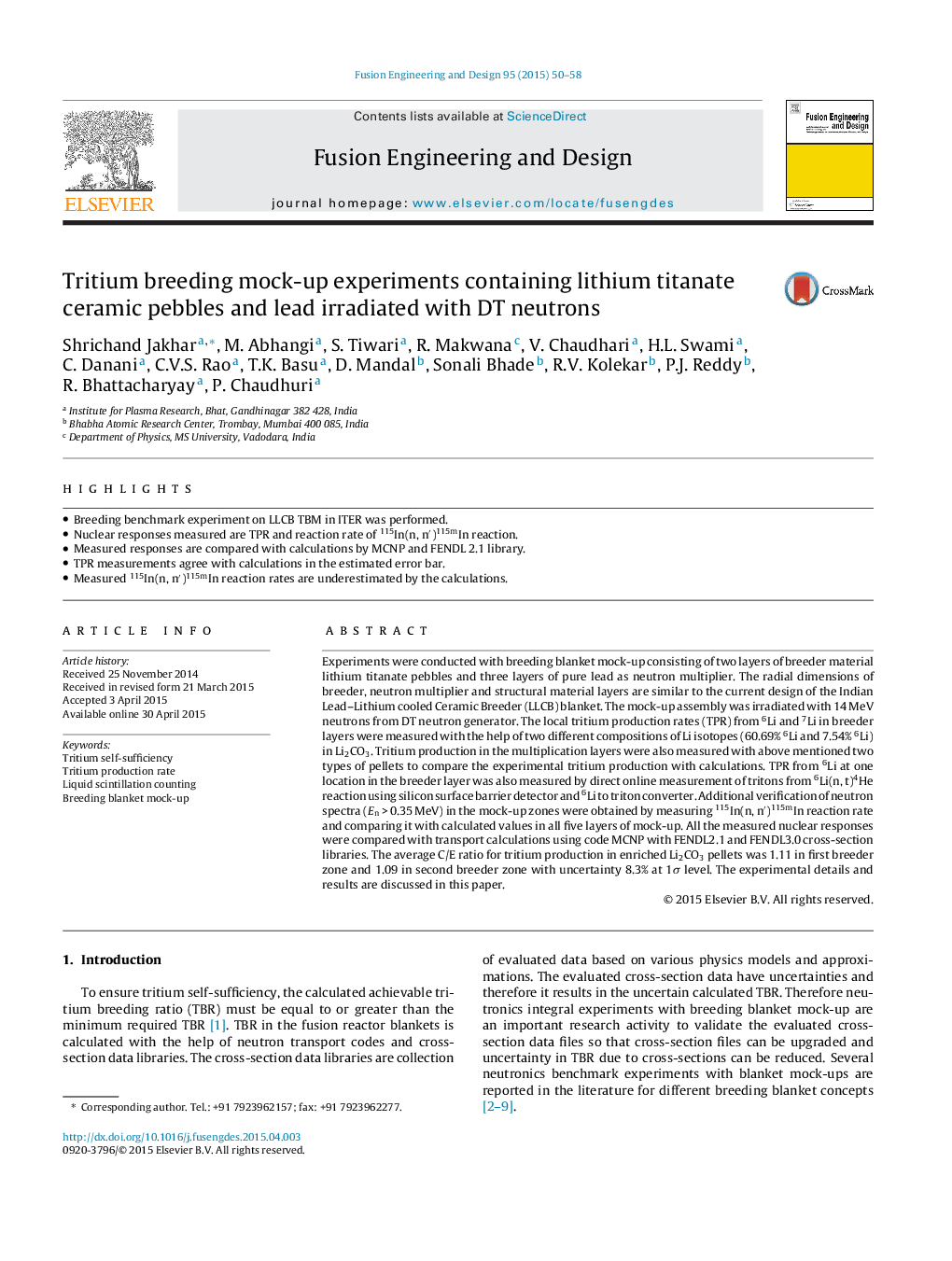| Article ID | Journal | Published Year | Pages | File Type |
|---|---|---|---|---|
| 270972 | Fusion Engineering and Design | 2015 | 9 Pages |
•Breeding benchmark experiment on LLCB TBM in ITER was performed.•Nuclear responses measured are TPR and reaction rate of 115In(n, n′)115mIn reaction.•Measured responses are compared with calculations by MCNP and FENDL 2.1 library.•TPR measurements agree with calculations in the estimated error bar.•Measured 115In(n, n′)115mIn reaction rates are underestimated by the calculations.
Experiments were conducted with breeding blanket mock-up consisting of two layers of breeder material lithium titanate pebbles and three layers of pure lead as neutron multiplier. The radial dimensions of breeder, neutron multiplier and structural material layers are similar to the current design of the Indian Lead–Lithium cooled Ceramic Breeder (LLCB) blanket. The mock-up assembly was irradiated with 14 MeV neutrons from DT neutron generator. The local tritium production rates (TPR) from 6Li and 7Li in breeder layers were measured with the help of two different compositions of Li isotopes (60.69% 6Li and 7.54% 6Li) in Li2CO3. Tritium production in the multiplication layers were also measured with above mentioned two types of pellets to compare the experimental tritium production with calculations. TPR from 6Li at one location in the breeder layer was also measured by direct online measurement of tritons from 6Li(n, t)4He reaction using silicon surface barrier detector and 6Li to triton converter. Additional verification of neutron spectra (En > 0.35 MeV) in the mock-up zones were obtained by measuring 115In(n, n′)115mIn reaction rate and comparing it with calculated values in all five layers of mock-up. All the measured nuclear responses were compared with transport calculations using code MCNP with FENDL2.1 and FENDL3.0 cross-section libraries. The average C/E ratio for tritium production in enriched Li2CO3 pellets was 1.11 in first breeder zone and 1.09 in second breeder zone with uncertainty 8.3% at 1σ level. The experimental details and results are discussed in this paper.
